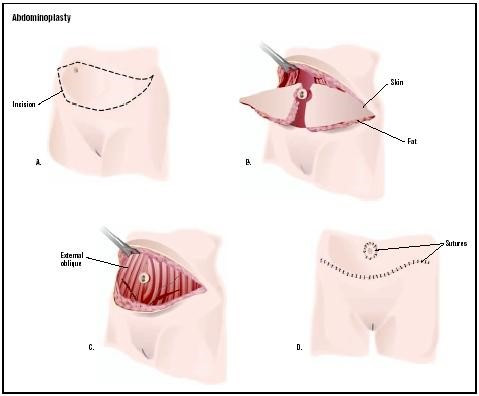We get it. The strict diets and the rigorous workouts are not giving you the taut tummy you
want. It is in situations like this that you should consider a tummy tuck. The tummy tuck,
also known as the “abdominoplasty,’ procedure will help remove your loose abdominal
skin and tighten up your abdominal muscles and abdominal fascia with surgery. Without
much ado, let us take a look at the procedure involved.
Pre-op
After studying your case history, your healthcare professional will suggest an
abdominoplasty. To guide her during the surgery, your doctor will mark your abdomen.
This marking will indicate the incision spot, the centre of your torso and the location of the
repositioned navel. This will help guide the doctors during the surgery. This will also give
you a rough idea of how you are going to look post the surgery.
What does the surgery involve?
You will be given general/regional anesthesia. Depending on the nature of the
abdominoplasty decided beforehand, the incision will be made. Normally, the primary
incision for a tummy tuck procedure is made above the pubic mound and extends from
one hipbone to the other. For full abdominoplasty, another incision is made around your
navel. In a partial tummy tuck, a shorter incision is made.
During the procedure, your doctor will
* Remove excess fat by liposuction or other methods
* Doctor will excise the excess sagging skin usually upto the belly button after safeguarding
the belly button.
* A tunnel is created in the midline from upper skin incision upto the xiphisternum and the lax
rectus sheath is tightened using sutures. The amount of tightening would vary case to case
and will depend upon the extent of tissue laxity.
* After placing the sutures, Your abdominal skin is then stretched down over your incision line
and the excess skin is removed.
* The bellybutton is relocated at the new postion.
* suction drain s are placed
* The cut edges of skin are sutured.
The types of abdominoplasty
There are primarily two types of abdominoplasty surgeries. The complete Abdominoplasty
where the doctor will cut from one hipbone to the other and the bellybutton is repositioned.
In partial abdominoplasty, the incision is much shorted and the bellybutton isn’t
repositioned i.e. there is no cut around the belly button.
Post-op Care.
The few days following a tummy tuck surgery can be painful. The healing time varies from
person to person- however, the first six weeks are very crucial. After a tummy tuck surgery,
your abdominal incision and belly button will be covered with a surgical dressing and small
tubes to drain excess fluids. Normally these are removed in 48 hours. It is ideal to start
walking the day after the surgery to prevent the formation of blood clots. It is normal to
observe swelling in and around the area of surgery.
You will be advised to wear supportive abdominal garments for six weeks post-surgery.
Ensure that you do not put any strain on your incision line. You’ll need to schedule regular
follow-up visits to check your progress. You will be advised to avoid strenuous exercise
/lifting weights for about 6 weeks.
For inquiries and online appointments, send a message through https://www.pinkappleaesthetics.com/contact-us/
Subscribe to Pink Apple Aesthetics YouTube Channel to watch videos related to cosmetic surgery/cosmetic procedures Subscribe Here — https://www.youtube.com/channel/UC5YFkh7OA_gf4D-lW-8Aabw/videos
Follow us on https://www.facebook.com/PinkAppleAesthetics/

